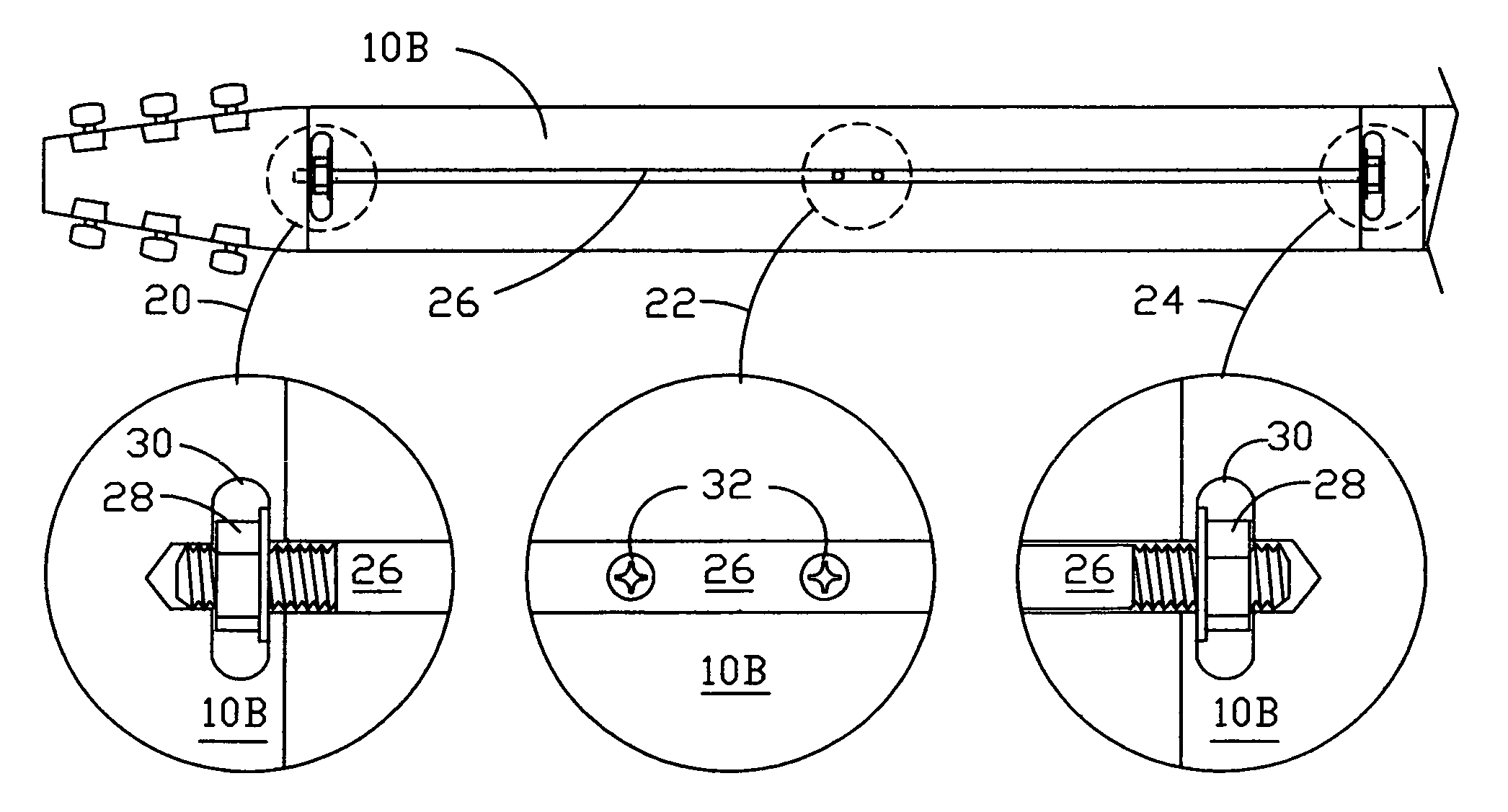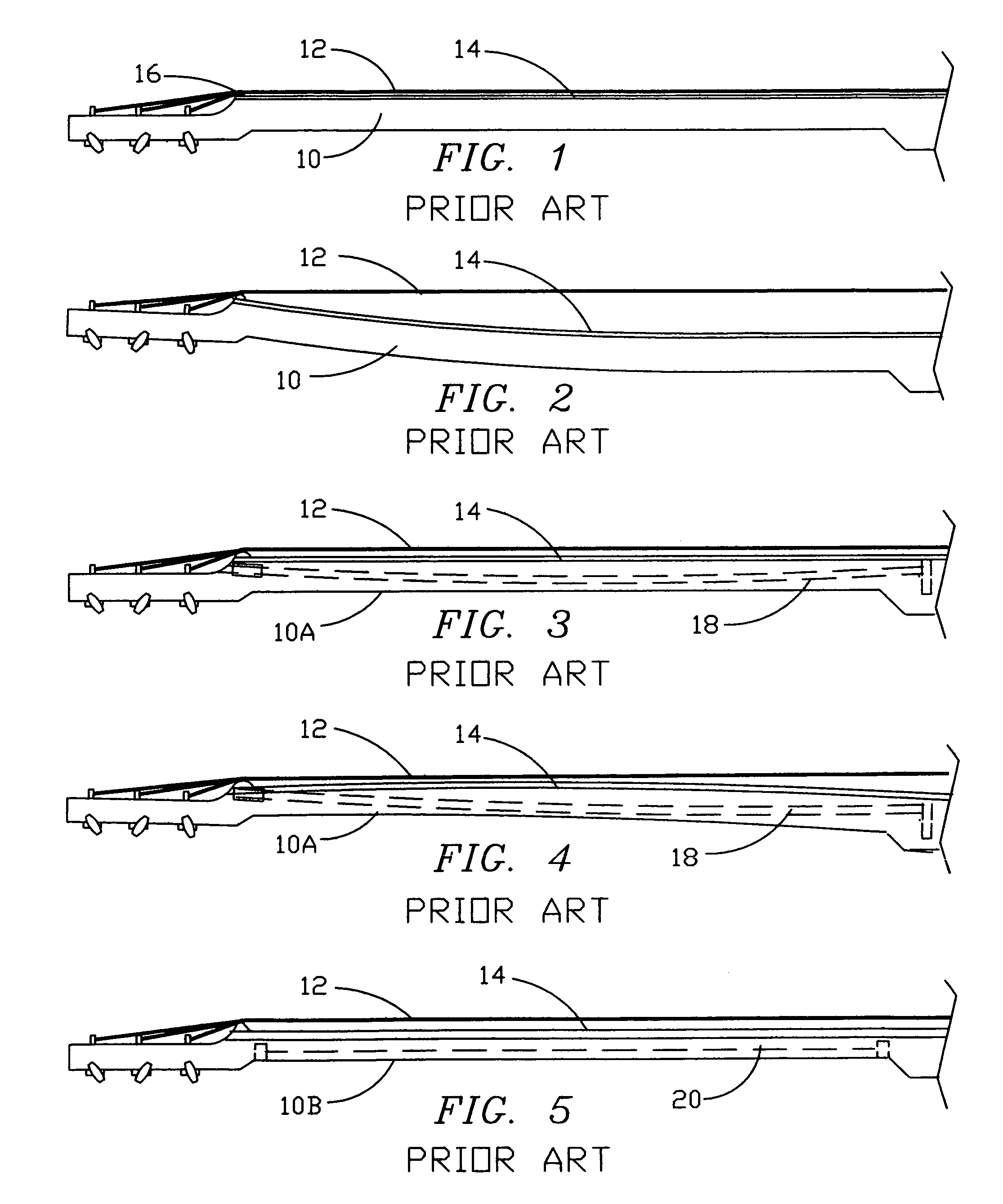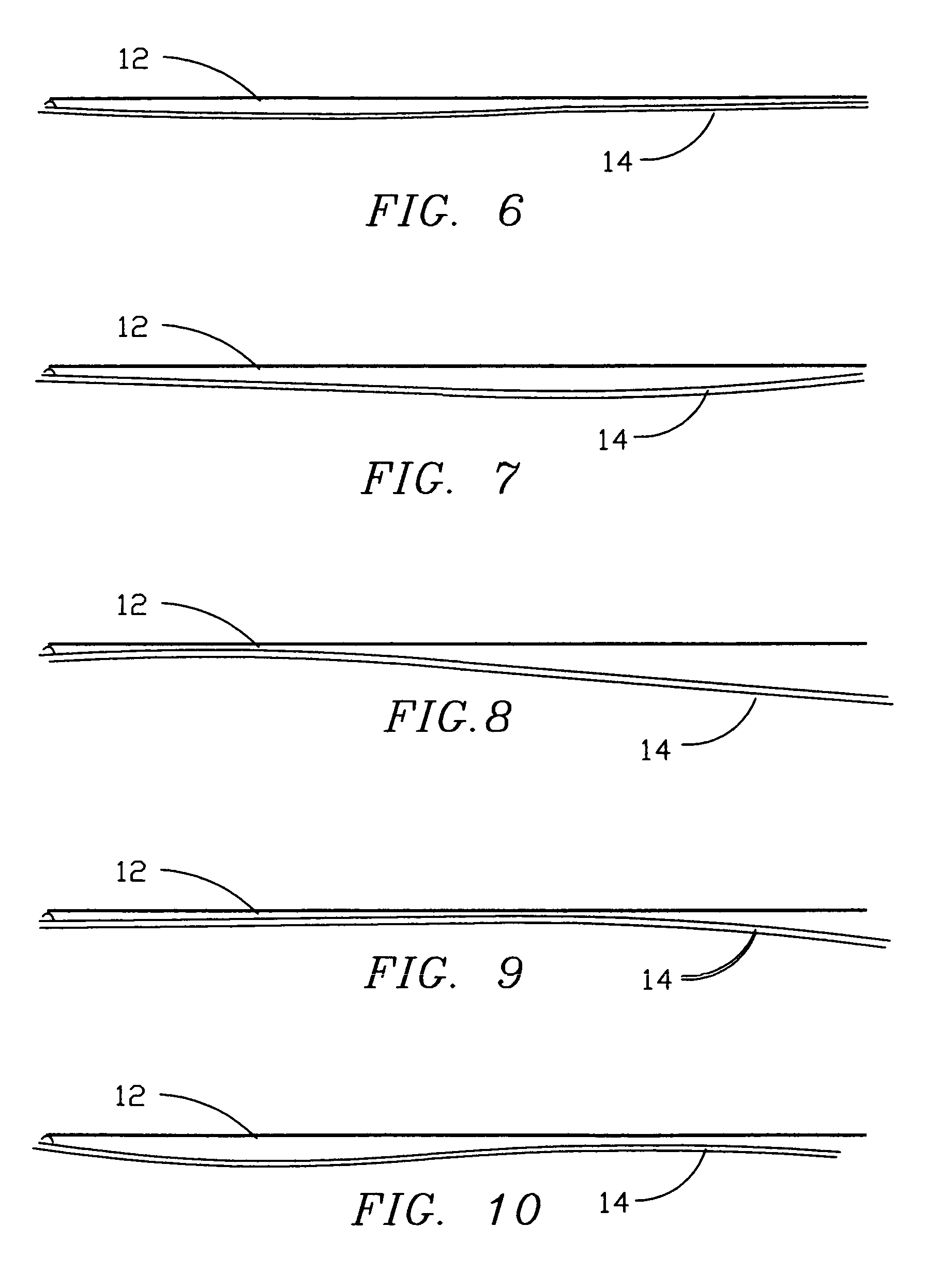Versatile neck truss system for stringed musical instruments
a stringed musical instrument and truss technology, applied in stringed musical instruments, musical instruments, guitars, etc., can solve the problems of imposing a burden of structural complexity, unable to provide reverse compensation capability for correcting convex neck curvature, and requiring the removal of the truss for repair or replacement, etc., to achieve the effect of flexible adjustment of the fingerboard
- Summary
- Abstract
- Description
- Claims
- Application Information
AI Technical Summary
Benefits of technology
Problems solved by technology
Method used
Image
Examples
Embodiment Construction
[0032]FIG. 1 is a side view of a stringed musical instrument neck 10 and tuning headstock of known art without a neck truss showing string location 12 spaced uniformly above the fingerboard 14 by a string-support nut 16 at the left hand end and a bridge (not shown) on the instrument body at the right hand end. For simplicity fingerboard 14 is shown as fretless, however the present description applies equally to a fretted fingerboard, i.e. a fret-board. In either case it is generally desired for ease of playing that the fingerboard 14 be kept substantially straight, i.e. longitudinally flat so that the nut and bridge can hold the taut strings at a close spacing above the fingerboard or frets, known as “low action”, that is substantially uniform throughout the neck length to generally facilitate finger-stopping and string-tapping while preventing vibrating strings from buzzing against frets or fingerboard 14.
[0033]The fingerboard 14 can be made as an integral part of the neck, but mor...
PUM
 Login to View More
Login to View More Abstract
Description
Claims
Application Information
 Login to View More
Login to View More - Generate Ideas
- Intellectual Property
- Life Sciences
- Materials
- Tech Scout
- Unparalleled Data Quality
- Higher Quality Content
- 60% Fewer Hallucinations
Browse by: Latest US Patents, China's latest patents, Technical Efficacy Thesaurus, Application Domain, Technology Topic, Popular Technical Reports.
© 2025 PatSnap. All rights reserved.Legal|Privacy policy|Modern Slavery Act Transparency Statement|Sitemap|About US| Contact US: help@patsnap.com



